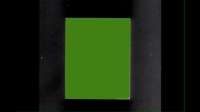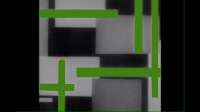Porn (Part One) ‐ Zoetrope Continually subvert the function of the machine Nan Yun Paik There is a natural sense of the world, but those ways that men have given their perceptions. Jean Mitry The dictionary defines zoetrope. (Zoo‐and gr. Τρόπος, back) as a device to turn produces the illusion of a moving drawn shapes, due to the persistence of images on the retina. This work emulates the invention of Horner (1832), the forerunner of what would later be called cinema, for it instead of painted figures we will use a number of TVs. These televisions are the place where life develops, based on the concept of Vattimo, we are a massmedia society, the other way for this installation (and thus the circular shape and the name) has to do with the circularity of the information, Bourdieu in his book on television talking about the treatment of such information circular (the newspapers watch television, they listen to radio and read newspapers these also watch television, and so on) Given that the media have different positions and that we could in the dynamics of representation bring them a color, we will make reference color palette and attaching it to the dynamics of the zoetrope, we will look for the white (understood as a search for Truth) is why we have identified 6 screens each with a specific color (Blue, Green, Yellow, Orange, Red, Purple) each of these screens show a sequence in color I've recreated the work of Hans Richter (1888 ‐ 1976), Rhythmus 21 (1921), we have taken this work to be considered by some as the first abstract film. This reference to abstract cinema is not free, first because we stress upon recovering a basic concept of the avant‐pure film, pure form and movement are the best way to show the world, not the false reality trying copy from photograph and organize it in a story. Our interest is to make clear the media information management in complex dialog that illusion in its paradox, the ultimate abstraction, using the features of the work of Richter, recovering complex values in the simplicity of its manifestation, the object and background are questioned, the indeterminacy of what you see, if the background or the object delves more reflective aspect of the work. If the dialogue can be given equal representation pairs and this necessarily involves mediation and these screens have been abstracted (literally), here is a way to combine the pieces of reality (such as reading interested) that despite not having any full sense, producing a context interpretable as play real world. Emphasizing the paradox, each TV showing the sequence in color will be identified with signs suggestive media (Reason, Truth etc.) Color screens interspersed with black and white screens, we want to emphasize the presence of the nuances, differentiate, but also with reference to the possible ghosts that are interspersed in these readings and abstractions, some might consider noise communication, we will take them as elements that complement the representational work, the chances of completing a total image, in these other 6 screens emulating find sequences so shallow The Return of Reason (1923) or Emak Bakia (1926) both abstract films of Man Ray. This continuum, which uses physical phenomena such as the persistence of vision or phi effect but not looking so interlace a visual continuum but rather emphasize the bays that builds media discourse, is a modest tribute to the forefront Dadaist . Understanding that the Dadaists also first introduced the principle of a structuring picture series, considering that thought is the modern mass industrial manufacturing process. Both the serial repetition of always the same as the construction of one form by the addition of other elements is taken from the idea of the endless belts of the assembly. The world of the machines has had on all aspects enormous attractive force to the Dadaists, thus resuming the work of Richter, that quest to go beyond reproduction. This work offers a reflection on the transparency of the images, how the media discourse machining has become a way of relating to obscene complexity to the point of confusing the image of the screens with life, this overwhelming world of images validates each in excess pornographic media, an orgy of screens, that look at what we intuit tangled through the cracks leaving us this enormous zoetrope, where the colors produced, the machine that recreates, does not exactly the same results as the natural colors. The obtained white (the truth of each) by rotation, that revolve around the screens that have created their own speech, is a kind of gray. This physical experience serves as an indication only. Juan Alvarez‐Durán 2010 Bolivia
Porn (Part One) ‐ Zoetrope Continually subvert the function of the machine Nan Yun Paik There is a natural sense of the world, but those ways that men have given their perceptions. Jean Mitry The dictionary defines zoetrope. (Zoo‐and gr. Τρόπος, back) as a device to turn produces the illusion of a moving drawn shapes, due to the persistence of images on the retina. This work emulates the invention of Horner (1832), the forerunner of what would later be called cinema, for it instead of painted figures we will use a number of TVs. These televisions are the place where life develops, based on the concept of Vattimo, we are a massmedia society, the other way for this installation (and thus the circular shape and the name) has to do with the circularity of the information, Bourdieu in his book on television talking about the treatment of such information circular (the newspapers watch television, they listen to radio and read newspapers these also watch television, and so on) Given that the media have different positions and that we could in the dynamics of representation bring them a color, we will make reference color palette and attaching it to the dynamics of the zoetrope, we will look for the white (understood as a search for Truth) is why we have identified 6 screens each with a specific color (Blue, Green, Yellow, Orange, Red, Purple) each of these screens show a sequence in color I've recreated the work of Hans Richter (1888 ‐ 1976), Rhythmus 21 (1921), we have taken this work to be considered by some as the first abstract film. This reference to abstract cinema is not free, first because we stress upon recovering a basic concept of the avant‐pure film, pure form and movement are the best way to show the world, not the false reality trying copy from photograph and organize it in a story. Our interest is to make clear the media information management in complex dialog that illusion in its paradox, the ultimate abstraction, using the features of the work of Richter, recovering complex values in the simplicity of its manifestation, the object and background are questioned, the indeterminacy of what you see, if the background or the object delves more reflective aspect of the work. If the dialogue can be given equal representation pairs and this necessarily involves mediation and these screens have been abstracted (literally), here is a way to combine the pieces of reality (such as reading interested) that despite not having any full sense, producing a context interpretable as play real world. Emphasizing the paradox, each TV showing the sequence in color will be identified with signs suggestive media (Reason, Truth etc.) Color screens interspersed with black and white screens, we want to emphasize the presence of the nuances, differentiate, but also with reference to the possible ghosts that are interspersed in these readings and abstractions, some might consider noise communication, we will take them as elements that complement the representational work, the chances of completing a total image, in these other 6 screens emulating find sequences so shallow The Return of Reason (1923) or Emak Bakia (1926) both abstract films of Man Ray. This continuum, which uses physical phenomena such as the persistence of vision or phi effect but not looking so interlace a visual continuum but rather emphasize the bays that builds media discourse, is a modest tribute to the forefront Dadaist . Understanding that the Dadaists also first introduced the principle of a structuring picture series, considering that thought is the modern mass industrial manufacturing process. Both the serial repetition of always the same as the construction of one form by the addition of other elements is taken from the idea of the endless belts of the assembly. The world of the machines has had on all aspects enormous attractive force to the Dadaists, thus resuming the work of Richter, that quest to go beyond reproduction. This work offers a reflection on the transparency of the images, how the media discourse machining has become a way of relating to obscene complexity to the point of confusing the image of the screens with life, this overwhelming world of images validates each in excess pornographic media, an orgy of screens, that look at what we intuit tangled through the cracks leaving us this enormous zoetrope, where the colors produced, the machine that recreates, does not exactly the same results as the natural colors. The obtained white (the truth of each) by rotation, that revolve around the screens that have created their own speech, is a kind of gray. This physical experience serves as an indication only. Juan Alvarez‐Durán 2010 Bolivia

